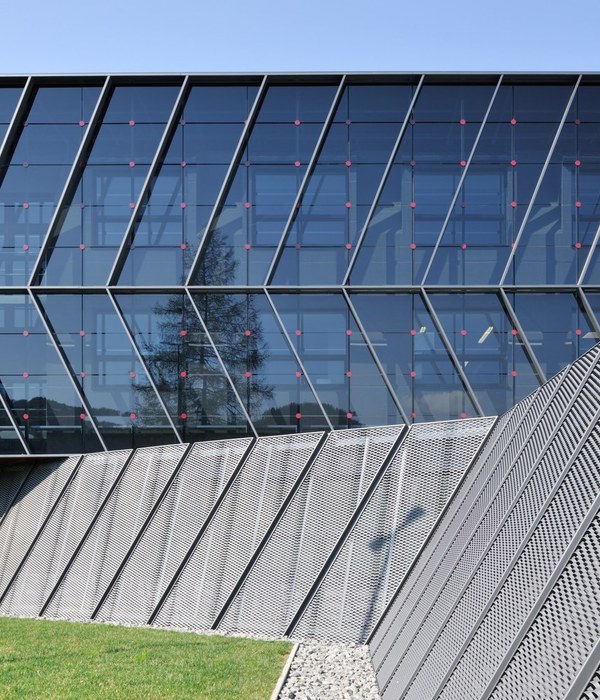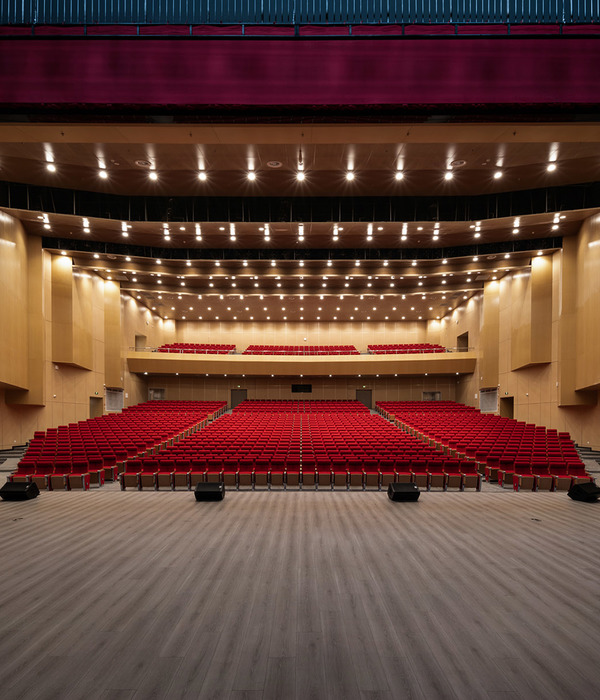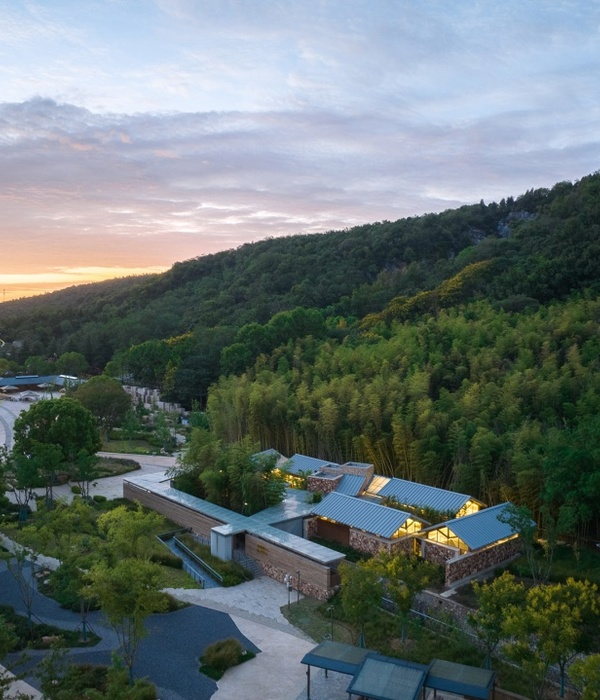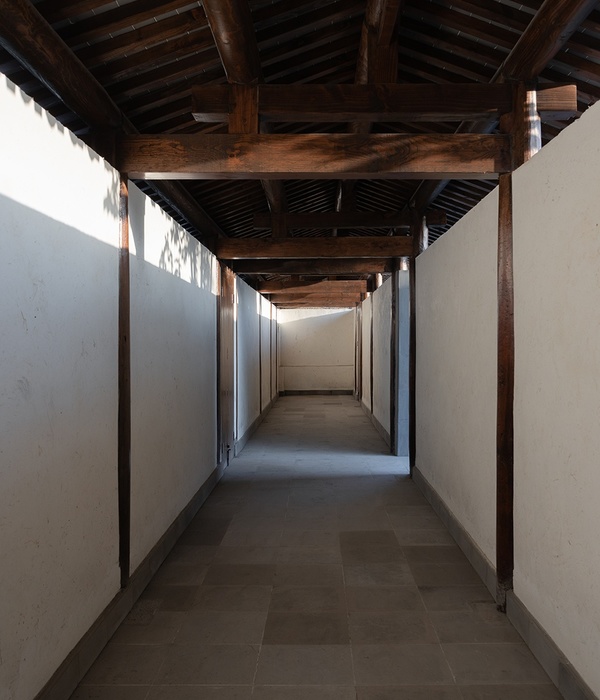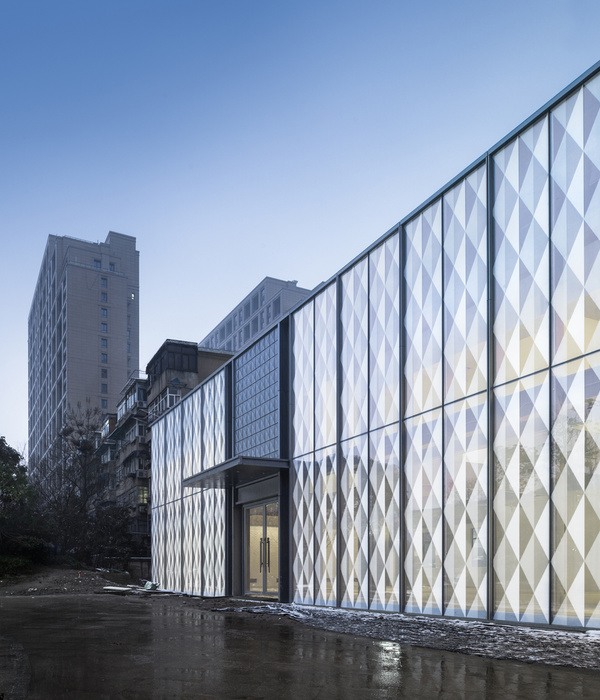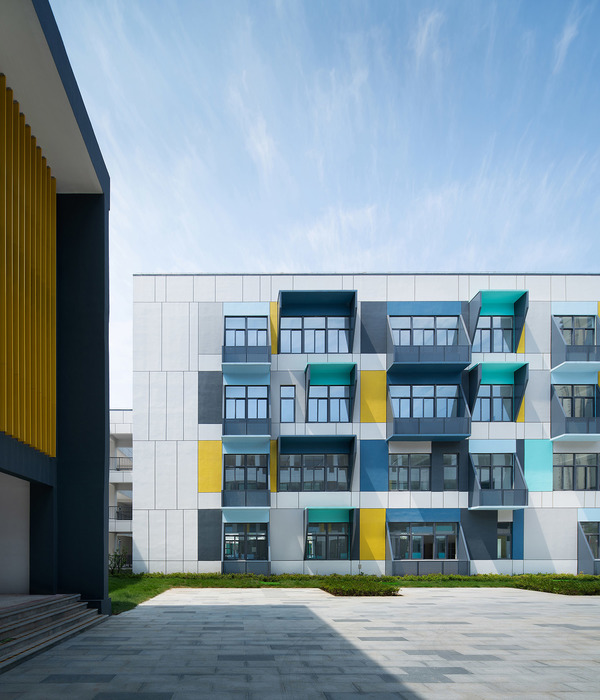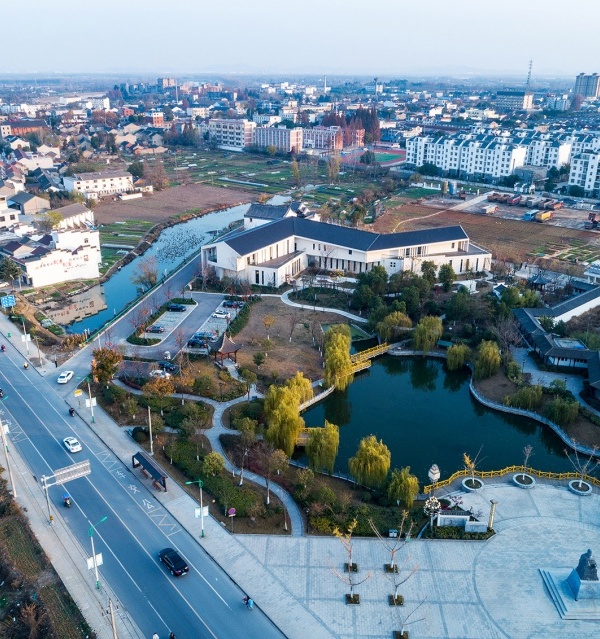Tianfu Agricultural Expo Garden is located in Xingyi Town, Xinjin, Sichuan. Green Seedling Project is located at the garden's core, Agricultural Expo Island. Five units of wood-structured buildings are well arranged in the field. The total building area is 10,500 square meters. The 1st floor to the 3rd floor will accommodate the space for diversified industries such as agricultural science & technology, breeding research, and cultural exhibitions.
The site is flat and open, with continuous paddy fields, sparse field paths, and tall trees, forming a typical rural landscape in western Sichuan. The site is located in the center of the field, originally a homestead. The plot is scattered, and the boundary is irregular. The design responds to the irregular shape of the red line by taking advantage of the situation and using the modular module that breaks up into parts. The architectural community reproduces the spatial intention of the traditional residential mode in western Sichuan-Linpan. In addition to connecting the internal and external traffic routes, the ground is restored to cultivated fields, and the bottom is the crops outside the aprons. The buildings grow directly from the fields, depicting an idyllic landscape.
The four main buildings adopt the “Green Seedling" theme, stretching in three directions. They are arranged along the turning point of the boundary of the application area so that each single unit has different rotation angles and shows a subtle position relationship with each other. Each single “Green Seedling” is divided into three bifurcated independent units. The central part converges to form an open hall with two floors, providing a semi-outdoor activity space protected by broad eaves, suitable for western Sichuan's warm and rainy climate.
The building adopts simple and natural materials because the original farmhouse in western Sichuan is mostly made of wooden beams, small green tiles, and brick walls. These local elements are referenced in the design, and dark gray ceramic tile, warm color glulam and gray paint walls are used. The products used here are all industrial products. Still, they come down in one continuous line with the traditional handicraft materials of agricultural houses, constructive dialogue that constitutes the temporal dimension.
The name “Green Seedling" comes from the bionic design of architecture. From the geometric center of the building, a group of arched wooden roofs grows in three directions at an angle of 120 degrees, forming the form of a "clover." The shape of plants reflects how they adapt to natural factors such as sunlight, rain, and surface wind. Buildings should reasonably respond to the environment, like plants, and have amazing structural beauty. To the east of the Green Seedling Project is the main exhibition hall of the Agricultural Expo Garden, which Academician Cui Kai designed. The five giant arch roofs form the most obvious landmark. The Green Seedling Project also adopts the glulam arch structure to outline the undulating skyline and talk with the vast horizon.
Considering the flexibility of later functions, the building units are designed with large bays. The roof structure adopts a 33-meter span glulam main arch to achieve a large space without columns on the top floor. The longitudinal main arch and transverse secondary beam arranged along the curved surface, like the veins of leaves, give the space a sense of life and vitality. The end of each secondary beam protrudes to support the eaves. To achieve a light and thin eaves line, the method of inserting steel plate ribs at the end of the wooden beam is adopted, and the upper part is covered with aluminum plate, which not only solves the problem of trimming small green tiles but also enriches the visual hierarchy. The internal space also emphasizes a sense of nature, and through exposed wooden beams and columns, decoration is avoided, achieving the integration of structure and interior design. Sunlight enters the interior through the eaves, and the space is filled with warm and pleasant light unique to the glulam structure.
At the end of each unit, the glulam main arch is supported on the inclined concrete column, and the symmetrical inclined thin steel column supports the overhanging wooden roof cornice. The form is lightweight, and the roof opens like a bird's wing, sheltering the overhanging balcony below. Wood, concrete, and steel - each material component clearly corresponds to its own force transmission purpose, expressing a clear construction relationship and reflecting the characteristics of "transparent structure".
Combining the special roof form, the design team specifically designed rainwater paths. The roof is laid with clay tiles above the flexible waterproof layer, utilizing the slope of the curved roof. The V-shaped roof collects rainwater into an arched ditch above the inner ridge, and then discharges it in both internal and external directions. The outer area adopts a water outlet, while the inner area converges at the rainwater bucket above the center of the open hall. It is then discharged into the underground reservoir through a hidden downpipe buried in a hexagonal concrete column. The collected rainwater serves as a water source for greening irrigation and road flushing, achieving comprehensive utilization of water resources.
{{item.text_origin}}




